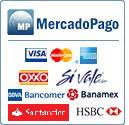
Konrad Theodor Preuss. From a very young age he became interested in philology, so he studied Latin and Greek. Later, geography and history captured his interest, leading him to anthropology. In 1895 he joined the Ethnological Museum in Berlin as a volunteer and later as a scientific assistant for the Oceania and Africa section. In 1900 he was appointed assistant director and curator in 1908. Preuss was close to philology, so Seler's work led him to approach the study of the Nahuatl language and the decipherment of pre-Hispanic codices. In 1920, he replaced Seler in the direction of the American section and was in charge of the collections of Central and North America.
During his work at the Ethnological Museum, he made two expeditions to the American continent. The first to Mexico between 1905 and 1907, and the second to Colombia between 1913 and 1919. In both he developed a particular methodological approach clearly influenced by his training in classical philology. This approach consisted in the study of the mythical and religious thought of the Amerindian peoples from their texts. After his trip to Mexico, Preuss launched into a rigorous work to edit the materials that he obtained among the Coras, the Huichols and the Mexicaneros in three volumes. Of this monumental work, only the first volume, dedicated to the Coras, managed to see the light in the form of the book The expedition to Nayarit (1912).




